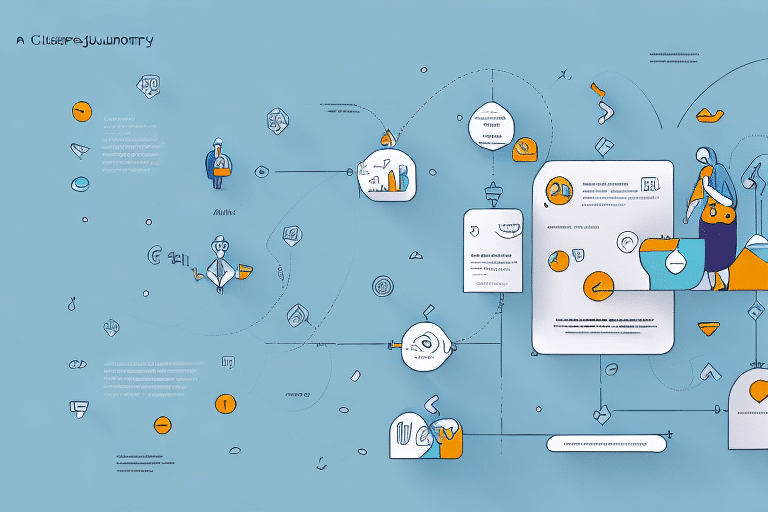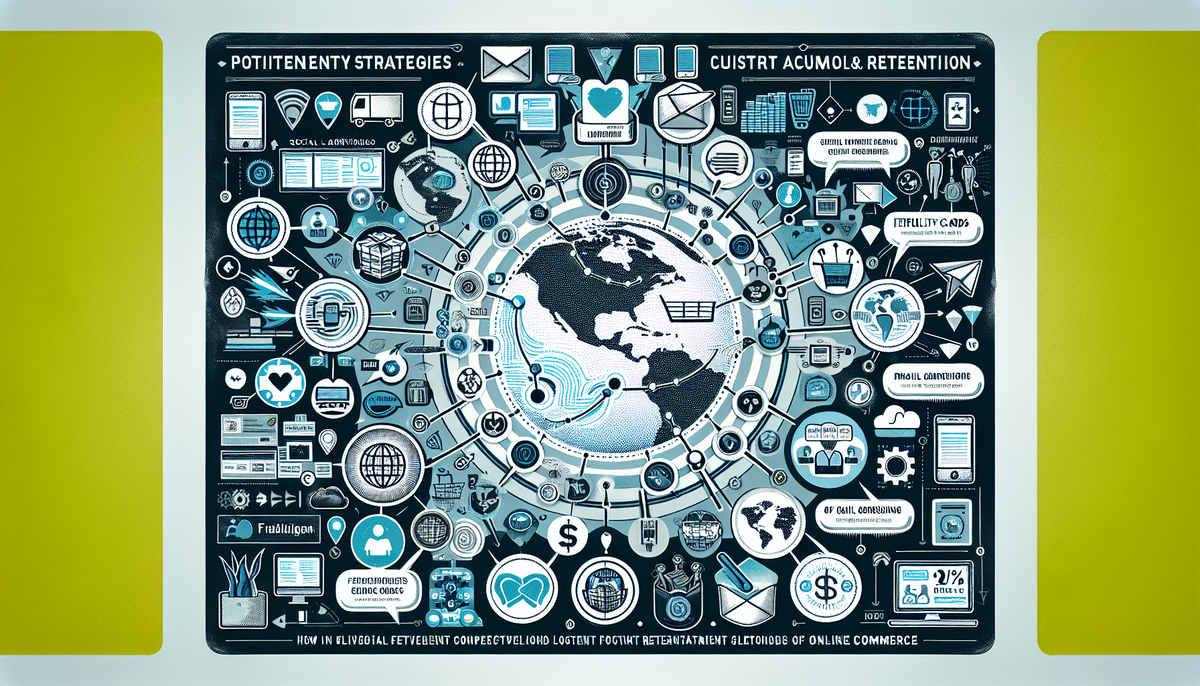How Operational Optimization Enhances Customer Loyalty
In today's competitive business landscape, customer loyalty is more important than ever. A loyal customer can provide steady revenue streams, reduce customer acquisition costs, and help promote your brand through word of mouth. But how do you ensure that your customers remain loyal? One effective way is by implementing operational optimization strategies.
The Importance of Customer Loyalty in Modern Business
Customer loyalty is essential for the survival and growth of any business. With increased competition, businesses need to focus on building lasting relationships with their customers. Loyal customers offer a stable source of revenue and are more likely to make repeat purchases, refer friends and family, and leave positive reviews online. According to a Forbes Business Council report, retaining existing customers can increase a company's profitability by up to 95%. In contrast, dissatisfied customers can harm a business's reputation, lead to negative reviews, and drive away potential customers. Therefore, it's important for businesses to prioritize customer loyalty and take steps to enhance it.
What is Operational Optimization and How It Works
Operational optimization is the process of improving business efficiency and effectiveness through various measures, including streamlining processes, reducing costs, and eliminating waste. In the context of customer loyalty, operational optimization involves identifying and addressing the factors that impact customer satisfaction and retention. This can include processes such as order fulfillment, delivery times, and customer support. By optimizing these processes, businesses can improve customer satisfaction, build loyalty, and ultimately increase revenue.
One of the key benefits of operational optimization is that it can help businesses stay competitive in their industry. By continuously improving their processes and reducing costs, businesses can offer more competitive prices to their customers. Additionally, operational optimization can help businesses adapt to changes in the market and customer demands more quickly, allowing them to stay ahead of the competition. Overall, operational optimization is a crucial aspect of running a successful business in today's fast-paced and ever-changing market.
Understanding the Key Metrics for Measuring Customer Loyalty
Measuring customer loyalty can be challenging, but it's essential to understand the key metrics that impact retention. Common metrics used to measure customer loyalty include customer satisfaction, customer lifetime value, and Net Promoter Score (NPS).
Customer Satisfaction
Customer satisfaction measures how satisfied customers are with a particular product or service. High satisfaction levels often correlate with increased loyalty and repeat business.
Customer Lifetime Value (CLV)
Customer lifetime value measures the total value a customer brings to a business over their lifetime. Understanding CLV helps businesses focus on long-term relationships rather than one-time transactions.
Net Promoter Score (NPS)
NPS measures how likely a customer is to recommend a business to others. According to Net Promoter, a higher NPS indicates a higher level of customer loyalty and satisfaction.
Customer Retention Rate
Another important metric for measuring customer loyalty is the customer retention rate. This metric measures the percentage of customers who continue to do business with a company over a certain period of time. A high retention rate indicates that customers are satisfied with the company's products or services and are more likely to remain loyal.
In addition to tracking these metrics, businesses can also improve customer loyalty by providing excellent customer service, offering loyalty programs, and regularly communicating with customers to understand their needs and preferences. By building strong relationships with customers, businesses can increase customer loyalty and ultimately drive revenue growth.
5 Ways to Improve Customer Loyalty through Operational Optimization
There are various ways businesses can improve customer loyalty through operational optimization:
- Provide Excellent Customer Service: Excellent customer service can go a long way in retaining customers. Ensure that customer support is readily available and responsive to their needs.
- Automate Processes: Automating routine processes such as order processing and shipping can improve efficiency and accuracy while reducing costs.
- Personalize Services: Personalize services to customers to make them feel appreciated and valued.
- Use Data Analytics: Use data analytics to gain insights into customer behavior and preferences. With this information, businesses can tailor their services to meet customer expectations.
- Offer Incentives: Offer incentives such as loyalty programs and discounts to encourage repeat purchases and reward loyal customers.
Additionally, businesses can consider the following strategies to further improve customer loyalty:
- Streamline the Checkout Process: A complicated checkout process can lead to cart abandonment. Simplify the checkout process by reducing the number of steps and offering multiple payment options.
- Provide Proactive Communication: Keep customers informed about their orders by providing proactive communication such as order confirmation, shipping updates, and delivery notifications. This can help build trust and confidence in the business.
By implementing these additional strategies, businesses can further enhance customer loyalty and improve their overall customer experience.
How Automating Processes Can Improve Customer Satisfaction
Automating processes such as order processing, shipping, and payment can improve efficiency and accuracy while reducing costs. With automated processes, businesses can quickly send order confirmations, track shipments, and tailor communications to customers based on their preferences. This improved efficiency can increase customer satisfaction by reducing turnaround times and improving order accuracy.
In addition to improving efficiency and accuracy, automating processes can also help businesses better manage their inventory. By automating inventory management, businesses can ensure they always have the right products in stock, reducing the likelihood of stockouts and backorders. This can lead to increased customer satisfaction, as customers are more likely to receive their orders on time and in full.
Another benefit of automating processes is that it can free up employees to focus on more high-value tasks, such as customer service and product development. By automating routine tasks, businesses can reduce the workload of their employees, allowing them to focus on tasks that require human expertise and creativity. This can lead to improved customer satisfaction, as customers are more likely to receive personalized attention and high-quality products.
The Role of Technology in Enhancing Operational Efficiency
Technology plays a significant role in operational optimization. Advancements in technology have allowed businesses to automate processes, improve data analytics, and offer personalized services. For instance, customer relationship management (CRM) software can help businesses manage customer information and interactions, while chatbots can provide customers with 24/7 support. Incorporating technology into operational optimization strategies can help businesses improve efficiency and enhance the customer experience.
One of the key benefits of technology in operational efficiency is the ability to reduce costs. Automation of processes can help businesses save time and money while also reducing the risk of errors. For example, automated inventory management systems can help businesses keep track of their stock levels, reducing the need for manual checks and minimizing the risk of stock shortages or overstocking.
Another advantage of technology in operational optimization is the ability to improve communication and collaboration within a business. Cloud-based tools and software can enable employees to work together on projects in real-time, regardless of their location. This can help streamline workflows and improve productivity, as well as facilitate better decision-making through the sharing of information and insights.
The Benefits of Personalized Services for Building Customer Loyalty
Personalized services involve customizing services to meet individual customer preferences and needs. Personalized services can help businesses build customer loyalty by making customers feel appreciated and understood. By collecting customer data such as purchase history, businesses can send targeted offers and personalized promotions that better align with customer preferences. In this way, businesses can create a more intimate and personalized customer experience, thereby increasing loyalty and retention rates.
Another benefit of personalized services is that they can help businesses stand out in a crowded market. With so many options available to consumers, businesses that offer personalized services can differentiate themselves from competitors and attract more customers. Additionally, personalized services can lead to increased customer satisfaction and positive word-of-mouth referrals, which can further boost a business's reputation and customer base.
However, it is important for businesses to be transparent about how they collect and use customer data for personalized services. Customers may be hesitant to share personal information if they do not trust how it will be used. Therefore, businesses should clearly communicate their data collection and privacy policies to build trust with customers and ensure they feel comfortable sharing their information.
Building a Culture of Continuous Improvement for Enhanced Customer Loyalty
Operational optimization is not a one-time event but a continuous and ongoing process. Businesses must strive to maintain a culture of continuous improvement, where they consistently analyze and optimize their processes to improve customer satisfaction. This involves setting goals, tracking progress, and consistently seeking feedback from customers to identify areas for improvement. By maintaining a culture of continuous improvement, businesses can better retain customers and improve customer loyalty.
The Impact of Employee Engagement on Customer Retention
Employee engagement is another important factor in customer retention. Employees who are engaged tend to provide better service, which can lead to improved customer satisfaction. Additionally, engaged employees are more likely to be invested in the company's success, leading to reduced turnover rates and improved morale. According to a Gallup study, highly engaged teams show 21% greater profitability. By offering employee training and incentive programs, businesses can improve employee engagement, which can ultimately lead to improved customer retention.
How to Use Data Analytics to Enhance Customer Experience and Loyalty
Data analytics can provide businesses with insights into customer behavior and preferences. By analyzing customer data such as purchase history and search queries, businesses can better understand customer needs and tailor their services to meet those needs. In this way, data analytics can help businesses improve customer satisfaction and retention rates.
For example, predictive analytics can anticipate customer needs and proactively address potential issues, enhancing the overall customer experience. Utilizing tools like IBM Analytics or Tableau can empower businesses to make data-driven decisions that foster customer loyalty.
Common Mistakes to Avoid When Implementing Operational Optimization Strategies
When implementing operational optimization strategies, businesses need to avoid some common mistakes. These include:
- Overcomplicating Processes: Overly complex processes can lead to confusion and decreased efficiency.
- Not Prioritizing Customer Satisfaction: Businesses must prioritize customer satisfaction and ensure that optimization strategies align with customer needs and preferences.
- Not Tracking Metrics: Tracking metrics is essential for gauging effectiveness and identifying areas for improvement.
- Not Taking a Holistic Approach: Operational optimization should be viewed as a holistic process that involves multiple departments and stakeholders.
Case Studies: Operational Optimization Success Stories for Improving Customer Loyalty
Many businesses have successfully implemented operational optimization strategies to improve customer loyalty. For instance, Amazon uses data analytics to personalize its product recommendations, while Zappos offers exceptional customer service by empowering its call center employees to go above and beyond for customers. Such success stories illustrate the importance of operational optimization in enhancing customer loyalty.
Another example is Salesforce, which streamlined its customer service operations using CRM tools to provide a seamless and responsive customer experience, resulting in higher customer satisfaction and loyalty.
Future Trends in Operational Optimization Strategies for Improved Customer Retention
The future of operational optimization is exciting, with new technologies and strategies emerging every day. For instance, the use of artificial intelligence (AI) can help businesses improve their efficiency and accuracy while providing a more personalized experience for customers. Additionally, the adoption of sustainability practices can help businesses reduce waste and lower their environmental impact, which can resonate with environmentally conscious customers.
According to a McKinsey report, trends such as the Internet of Things (IoT), machine learning, and blockchain are set to revolutionize operational optimization. As these and other trends continue to evolve, operational optimization will remain an essential tool for businesses seeking to enhance customer loyalty and retention.
Conclusion
Operational optimization plays a critical role in enhancing customer loyalty by improving efficiency, reducing costs, and delivering superior customer experiences. By focusing on key areas such as customer service, personalization, data analytics, and employee engagement, businesses can build strong, lasting relationships with their customers. As technology continues to advance, staying ahead of operational optimization trends will be vital for maintaining a competitive edge and fostering long-term customer loyalty.




















